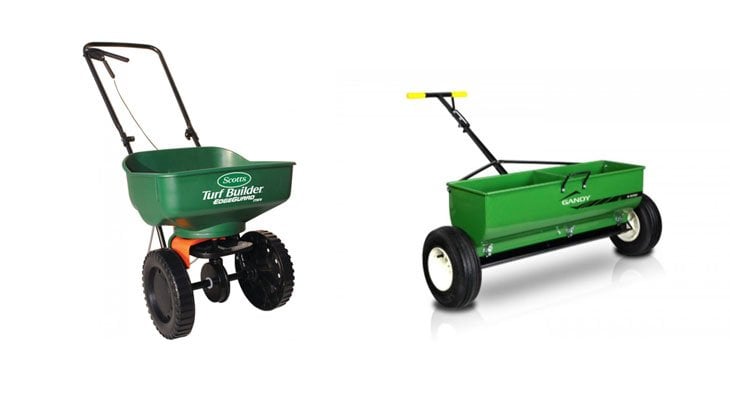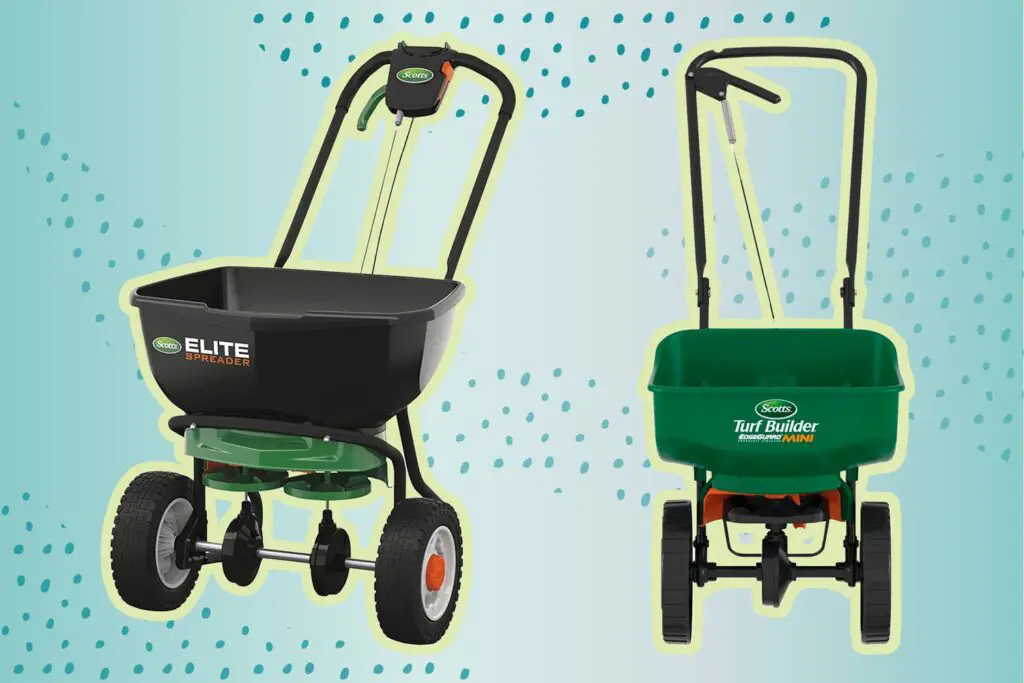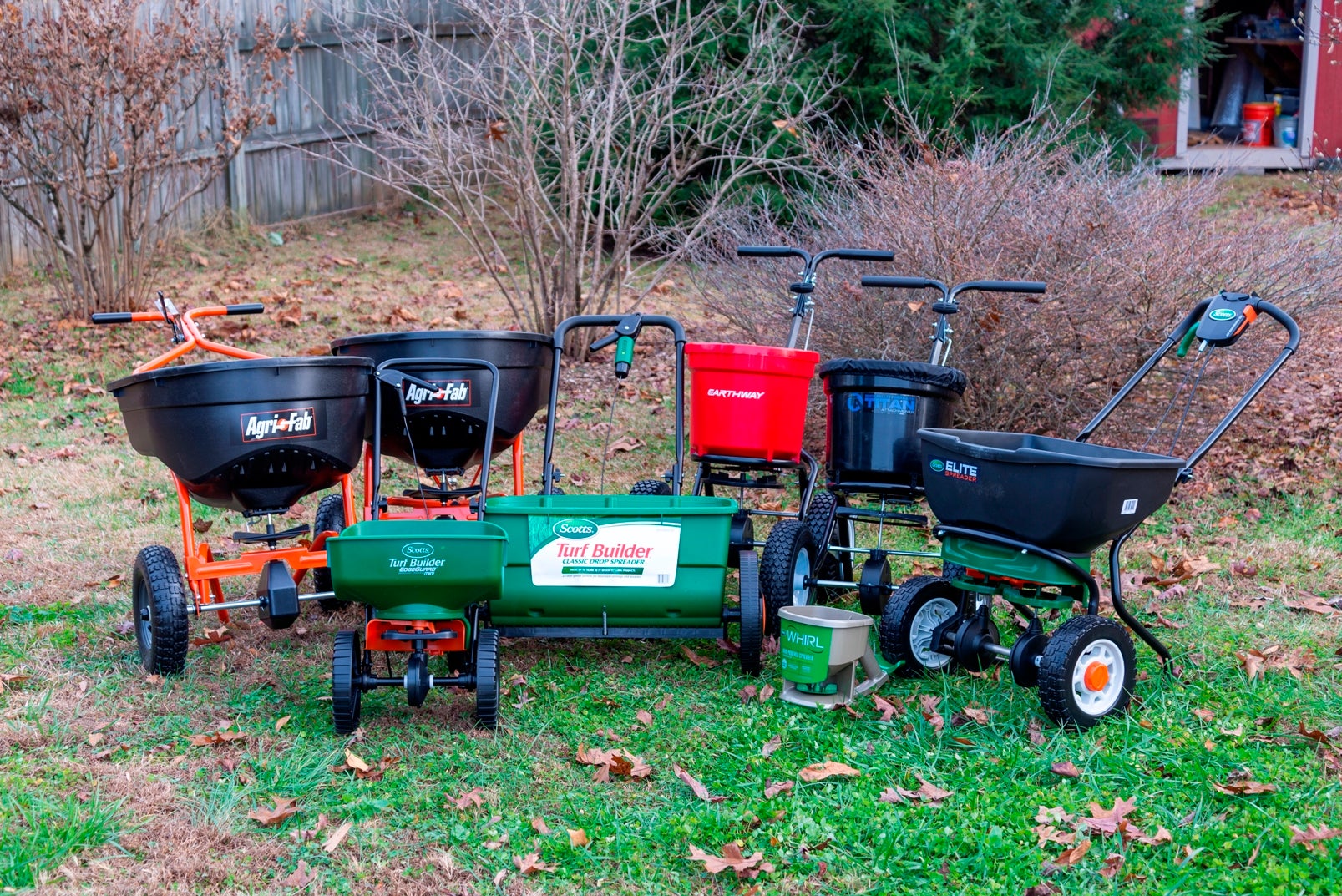This post may contain affiliate links which means I may receive a commission for purchases made through links. Learn more on my Private Policy page.
Are you wondering how to choose the perfect fertilizer spreader for your gardening needs? Look no further! In this article, we will guide you on how to make the right decision when it comes to selecting the ideal fertilizer spreader. From assessing your lawn size and terrain to understanding the different types of spreaders available, we’ve got you covered. Get ready to take your gardening game to the next level with the perfect fertilizer spreader for your yard. Choosing the right type of fertilizer spreader is crucial for maintaining a healthy and lush lawn. With so many options available in the market, it can be overwhelming to make the right decision. However, by considering a few key factors, you can easily narrow down your choices and find the perfect fertilizer spreader for your needs. In this article, we will discuss the different types of fertilizer spreaders, important factors to consider, and provide detailed descriptions, pros, and cons of each type.

This image is property of www.bhg.com.
Types of Fertilizer Spreaders
Walk-Behind Spreaders
Walk-behind spreaders are the most common and widely used type of fertilizer spreaders. As the name suggests, these spreaders are designed to be pushed by hand, allowing you to cover small to medium-sized lawns efficiently. They usually have a hopper capacity ranging from 20 to 50 pounds, making them suitable for residential use. Walk-behind spreaders are versatile and can also be used for spreading seeds, salt, and other granular materials.
Push Spreaders
Push spreaders are similar to walk-behind spreaders, but they often have larger hopper capacities and are more robust in design. These spreaders are suitable for larger lawns and commercial use. They are usually equipped with larger wheels, providing better stability and maneuverability. Push spreaders are ideal for even distribution of fertilizer and are commonly used by professional lawn care companies.
Drop Spreaders
Drop spreaders work by dropping the fertilizer directly beneath the spreader as you walk. This method ensures precise application as the fertilizer is targeted exactly where it is needed. Drop spreaders are perfect for lawns with narrow or irregularly-shaped areas, as they provide accurate coverage along edges and around obstacles. However, they may require more passes to cover a large area compared to other types of spreaders.
Broadcast Spreaders
Broadcast spreaders, also known as rotary spreaders, are designed to spread fertilizer in a wide, fan-like pattern. They feature a spinning disc that throws the fertilizer in multiple directions, covering a larger area with each pass. Broadcast spreaders are ideal for large lawns and areas that require quick and efficient coverage. However, their wide throw pattern can sometimes result in overlapping or uneven distribution of fertilizer.
Now that we have discussed the different types of fertilizer spreaders, let’s move on to the factors you need to consider when choosing the right one for your lawn.
Factors to Consider when Choosing a Fertilizer Spreader
Lawn Size
The size of your lawn plays a crucial role in determining the type of fertilizer spreader you should choose. For small lawns, a walk-behind spreader with a smaller hopper capacity is sufficient. Medium-sized lawns may require a push spreader with a larger hopper capacity to cover the area efficiently. If you have a large lawn, a broadcast spreader with a wide throw pattern can save you both time and effort.
Type of Fertilizer
Different spreaders are designed to handle specific types of fertilizers. Granular fertilizers are the most commonly used and are compatible with all types of spreaders. However, if you plan to use liquid fertilizer, you will need to ensure that the spreader you choose has the capability to handle liquid applications. Some spreaders come with adjustable settings that allow you to switch between granular and liquid applications.
Price
The price range of fertilizer spreaders varies significantly based on the type, brand, and features. It’s essential to set a budget before making a purchase and explore options within that range. It’s important to note that cheaper does not always mean better. Consider the quality, durability, and features offered by the spreader within your budget to make the best decision.
Ease of Use
A user-friendly fertilizer spreader can make your lawn care tasks much more convenient. Look for features such as adjustable handlebars, comfortable grips, and easy-to-use controls. Some spreaders come with pneumatic tires, which provide a smooth and comfortable pushing experience. Consider the weight of the spreader, as a lightweight option will be easier to maneuver.
Durability
Durability is an important factor to consider, especially if you plan to use the spreader frequently or in commercial settings. Look for spreaders made from durable materials such as stainless steel or corrosion-resistant plastic. Additionally, consider the overall build quality and read reviews from other customers to ensure that the spreader can withstand frequent use and harsh conditions.
Now, let’s delve deeper into each type of fertilizer spreader to provide a detailed description, as well as the pros and cons for each.
Walk-Behind Spreaders
Description
Walk-behind spreaders are the most commonly used type of fertilizer spreaders for residential use. They feature a hopper at the front, which holds the fertilizer. As you walk, the fertilizer is dispersed through rotating spreader plates at the bottom of the hopper. These spreaders are typically lightweight and easy to push, making them ideal for small to medium-sized lawns.
Pros
- Lightweight and easy to maneuver
- Suitable for small to medium-sized lawns
- Versatile – can be used for spreading seeds and other granular materials
- Affordable option for homeowners
Cons
- Limited hopper capacity, may require refilling for larger lawns
- May require more passes for even coverage in large areas
Push Spreaders
Description
Push spreaders are similar to walk-behind spreaders but are designed for larger lawns and commercial use. These spreaders feature larger hopper capacities, allowing you to cover a greater area without refilling frequently. They are typically more robust in design and equipped with larger wheels, providing better stability and maneuverability.
Pros
- Larger hopper capacity for covering larger areas efficiently
- Better stability and maneuverability with larger wheels
- Suitable for both residential and commercial use
- Precise fertilizer distribution
Cons
- Heavier and may require more effort to push
- Higher cost compared to walk-behind spreaders

This image is property of www.epicgardening.com.
Drop Spreaders
Description
Drop spreaders work by dropping the fertilizer directly beneath the spreader as you walk. This method ensures precise application, making drop spreaders ideal for lawns with narrow or irregularly shaped areas. They provide accurate coverage along edges and around obstacles, resulting in even distribution of fertilizer.
Pros
- Precise application, targeting fertilizer exactly where it is needed
- Ideal for lawns with narrow or irregularly shaped areas
- Accurate coverage along edges and around obstacles
- Suitable for both residential and commercial use
Cons
- May require more passes to cover a large area compared to other types of spreaders
- Limited hopper capacity, may require frequent refilling
Broadcast Spreaders
Description
Broadcast spreaders, or rotary spreaders, are designed to spread fertilizer in a wide, fan-like pattern. They feature a spinning disc that throws the fertilizer in multiple directions, covering a larger area with each pass. These spreaders are efficient for larger lawns and areas that require quick coverage.
Pros
- Wide throw pattern for quick and efficient coverage
- Ideal for large lawns
- Time-saving
- Suitable for spreading seeds and other granular materials
Cons
- May result in overlapping or uneven distribution of fertilizer
- Limited precision compared to drop spreaders
Now that we have covered the different types of fertilizer spreaders, let’s discuss the factors to consider based on lawn size, type of fertilizer, price, ease of use, and durability.

This image is property of empire-s3-production.bobvila.com.
Lawn Size
Small Lawns
For small lawns, walk-behind spreaders are usually the best choice. They are lightweight, easy to maneuver, and have a compact hopper capacity that can cover the area efficiently without the need for frequent refilling.
Medium Lawns
Medium-sized lawns may require a push spreader with a larger hopper capacity. Push spreaders can cover a greater area with each pass, providing better efficiency and reducing the time spent on spreading fertilizer.
Large Lawns
Broadcast spreaders are ideal for large lawns as they offer wide coverage in a short amount of time. Their wide throw pattern allows you to cover a significant area without the need for multiple passes.
Type of Fertilizer
Granular Fertilizer
All types of spreaders are compatible with granular fertilizers, making them the most commonly used type. Granular fertilizers come in various forms, such as slow-release, fast-release, and organic options, allowing you to choose the best one based on your lawn’s specific needs.
Liquid Fertilizer
If you plan to use liquid fertilizer, make sure the spreader you choose has the capability to handle liquid applications. Some spreaders come with specialized attachments or settings that allow you to switch between granular and liquid applications.

This image is property of cdn-moce.doitbest.com.
Price
Budget-Friendly Options
There are various budget-friendly options available in the market, especially for walk-behind spreaders. While these spreaders may have smaller hopper capacities and limited features, they can still provide efficient coverage for small to medium-sized lawns.
High-End Options
If you are willing to invest in a more premium fertilizer spreader, you can find higher-end options with advanced features and larger hopper capacities. These spreaders are generally more durable and offer better performance, making them suitable for commercial use or large lawns.
Durability
Material
The material of the fertilizer spreader plays a crucial role in its durability. Look for spreaders made from durable materials such as stainless steel or corrosion-resistant plastic. Stainless steel spreaders are more rugged and can withstand frequent use and harsh weather conditions.
Quality
Apart from the material, consider the overall build quality of the spreader. Read customer reviews and check for warranties to ensure that the spreader is reliable and built to last.
In conclusion, choosing the right type of fertilizer spreader is essential for maintaining a healthy and vibrant lawn. By considering factors such as lawn size, type of fertilizer, price, ease of use, and durability, you can make an informed decision. Whether you opt for a walk-behind spreader, push spreader, drop spreader, or broadcast spreader, remember to choose one that fits your needs and budget. With the right fertilizer spreader, you can efficiently distribute fertilizer and achieve the green, lush lawn you desire.

This image is property of www.thespruce.com.
This post may contain affiliate links which means I may receive a commission for purchases made through links. Learn more on my Private Policy page.

